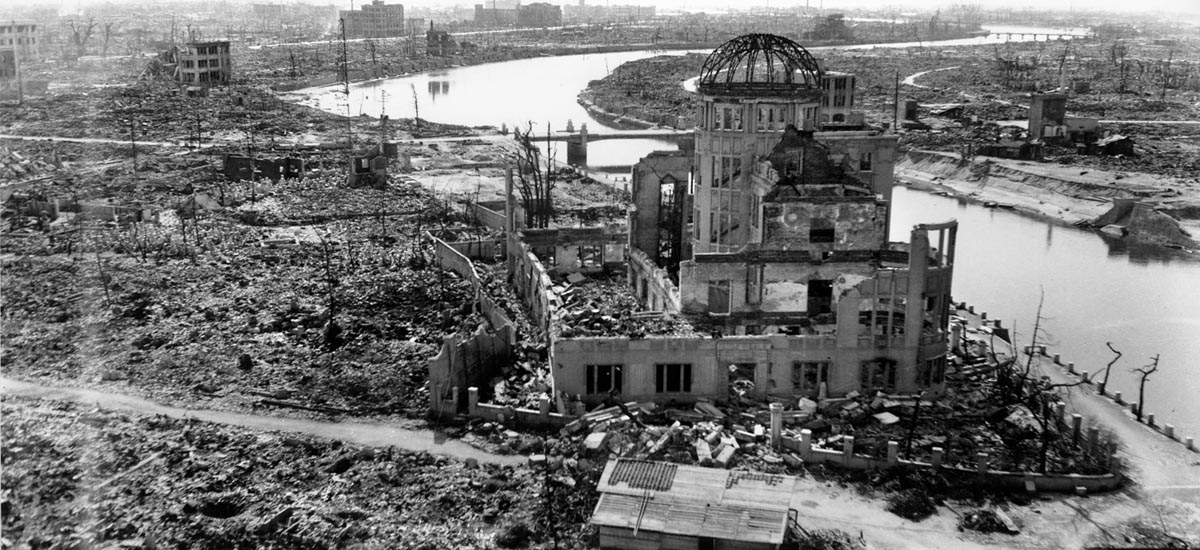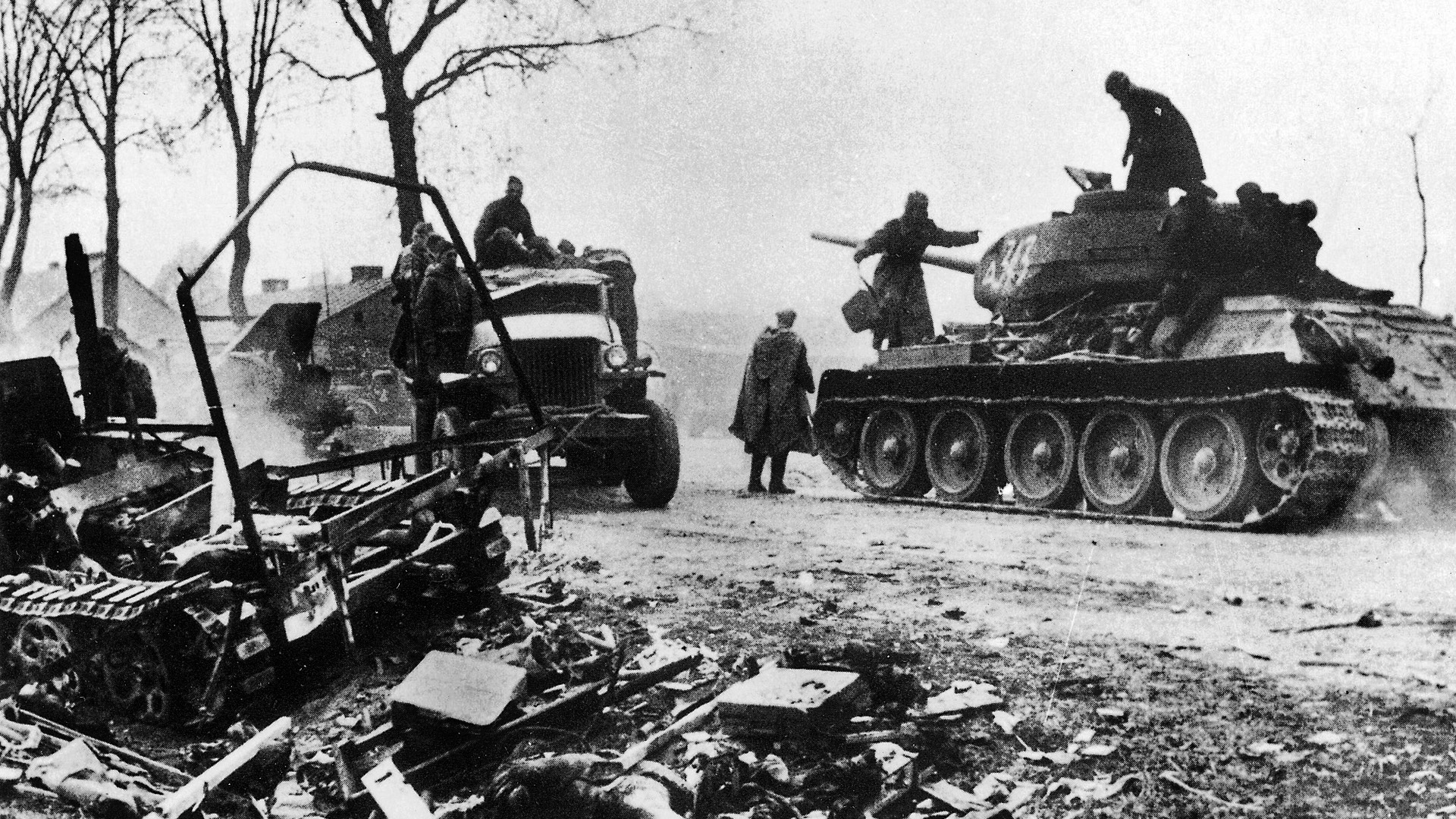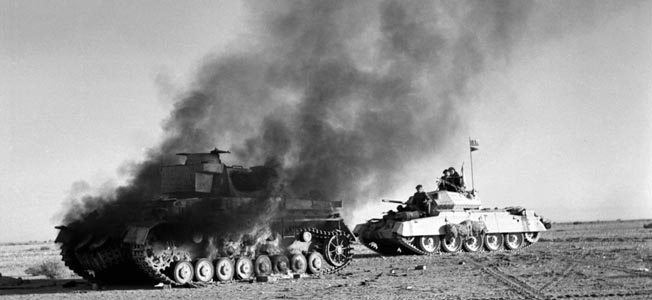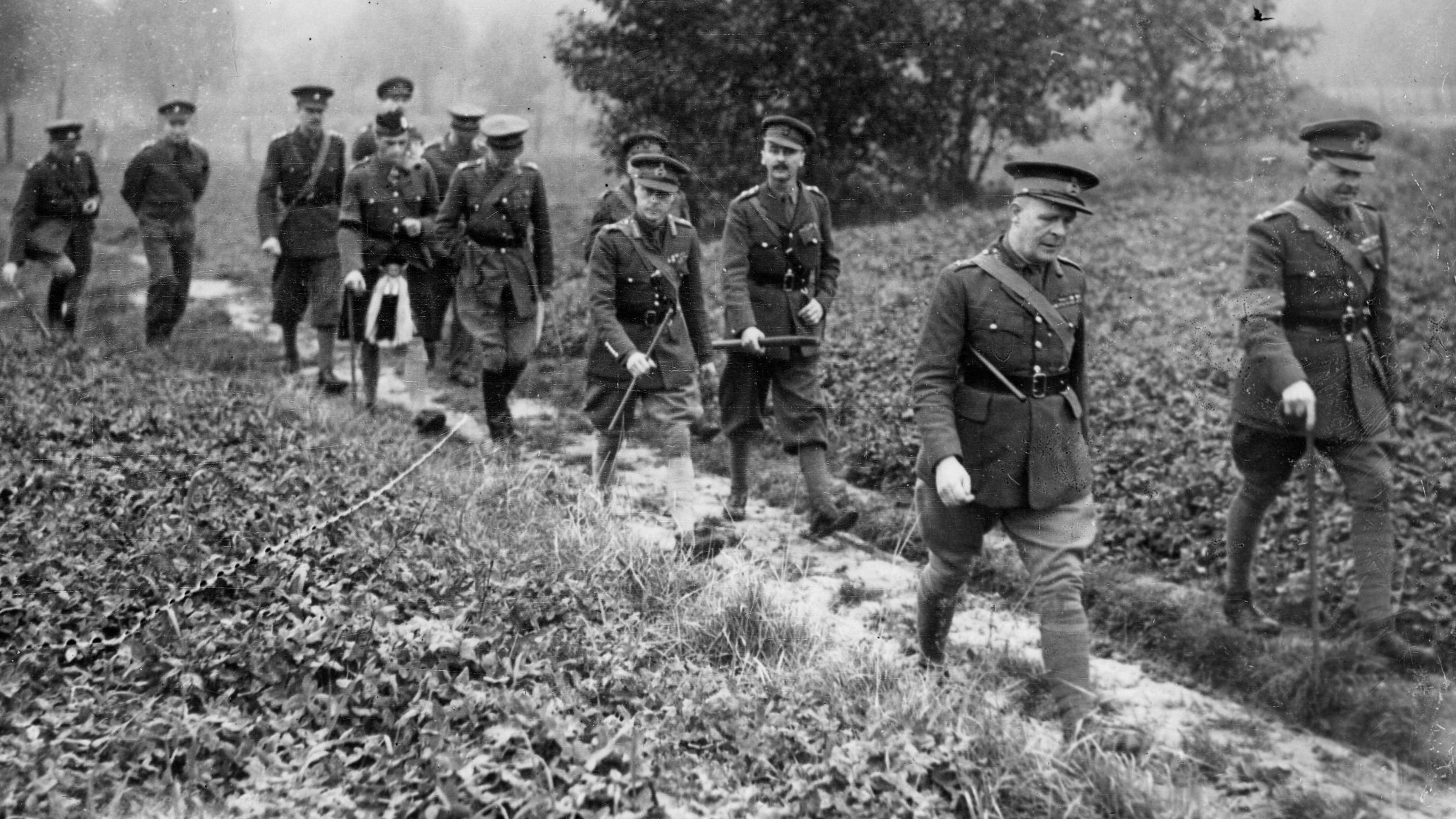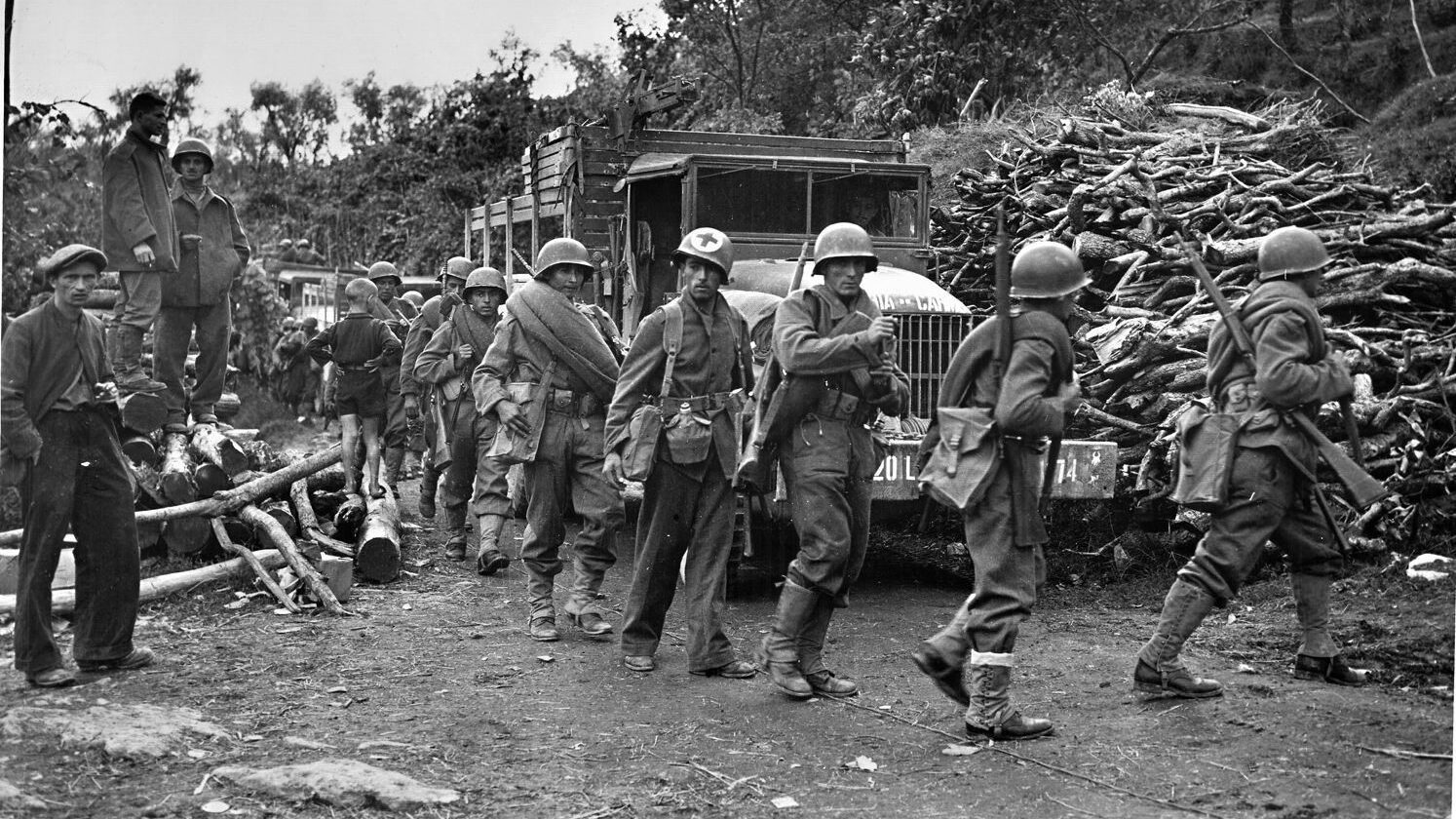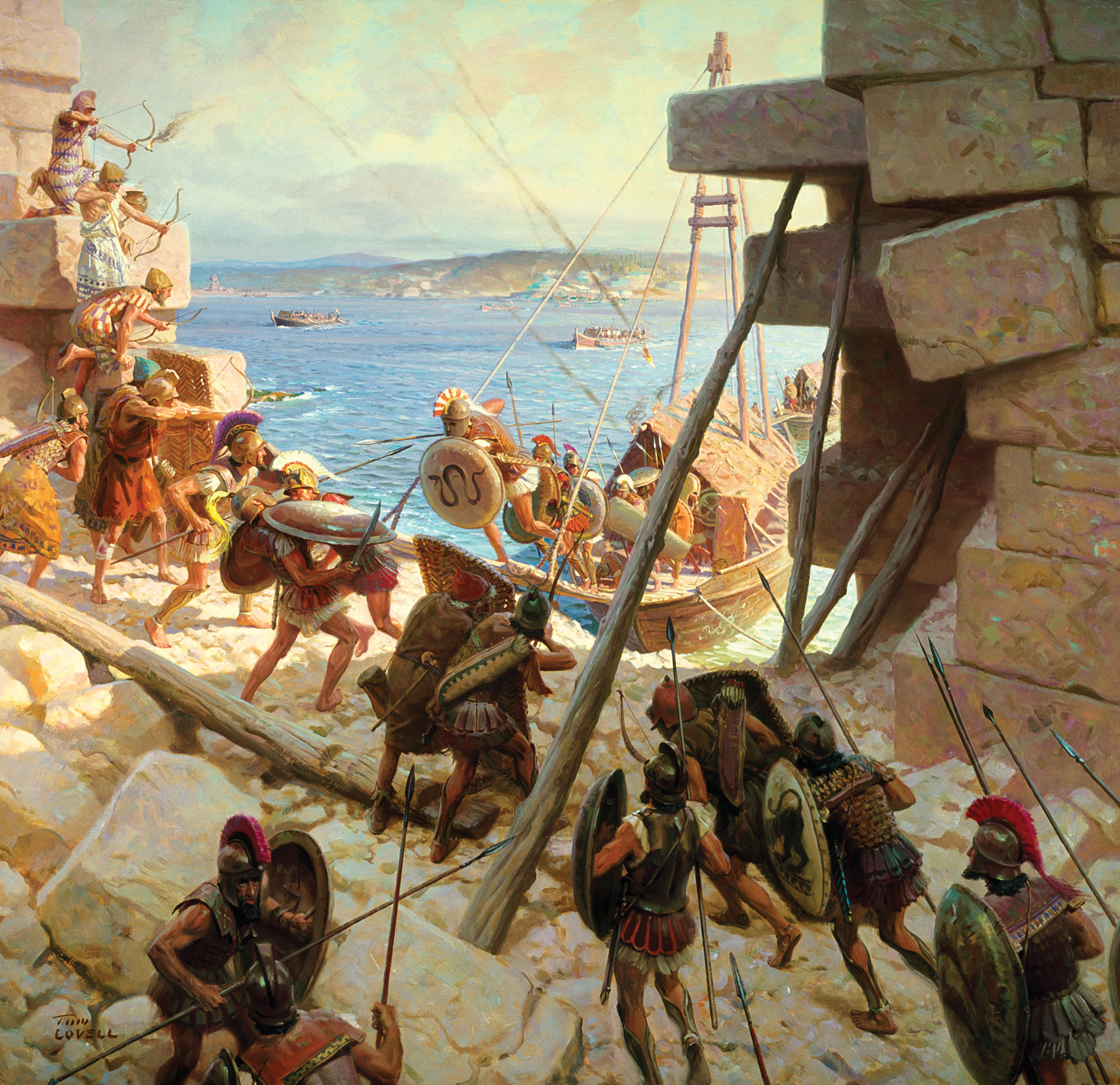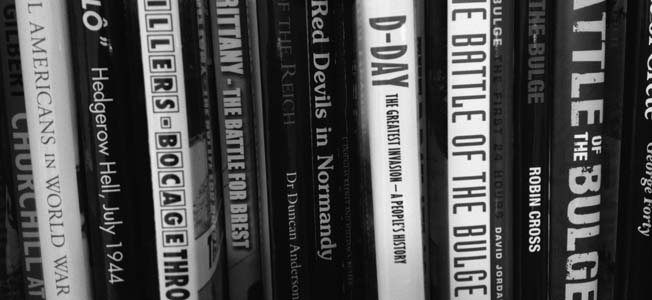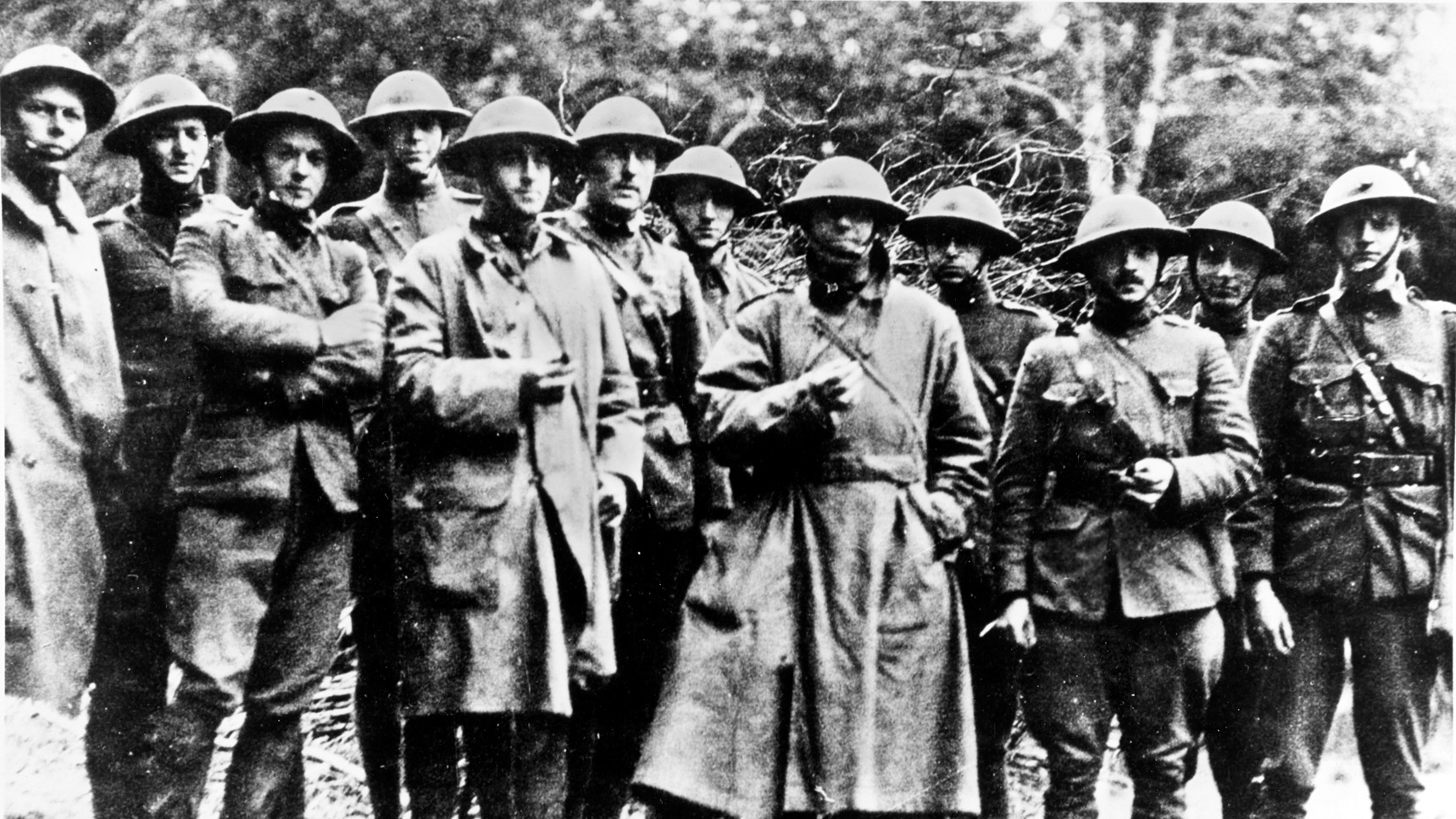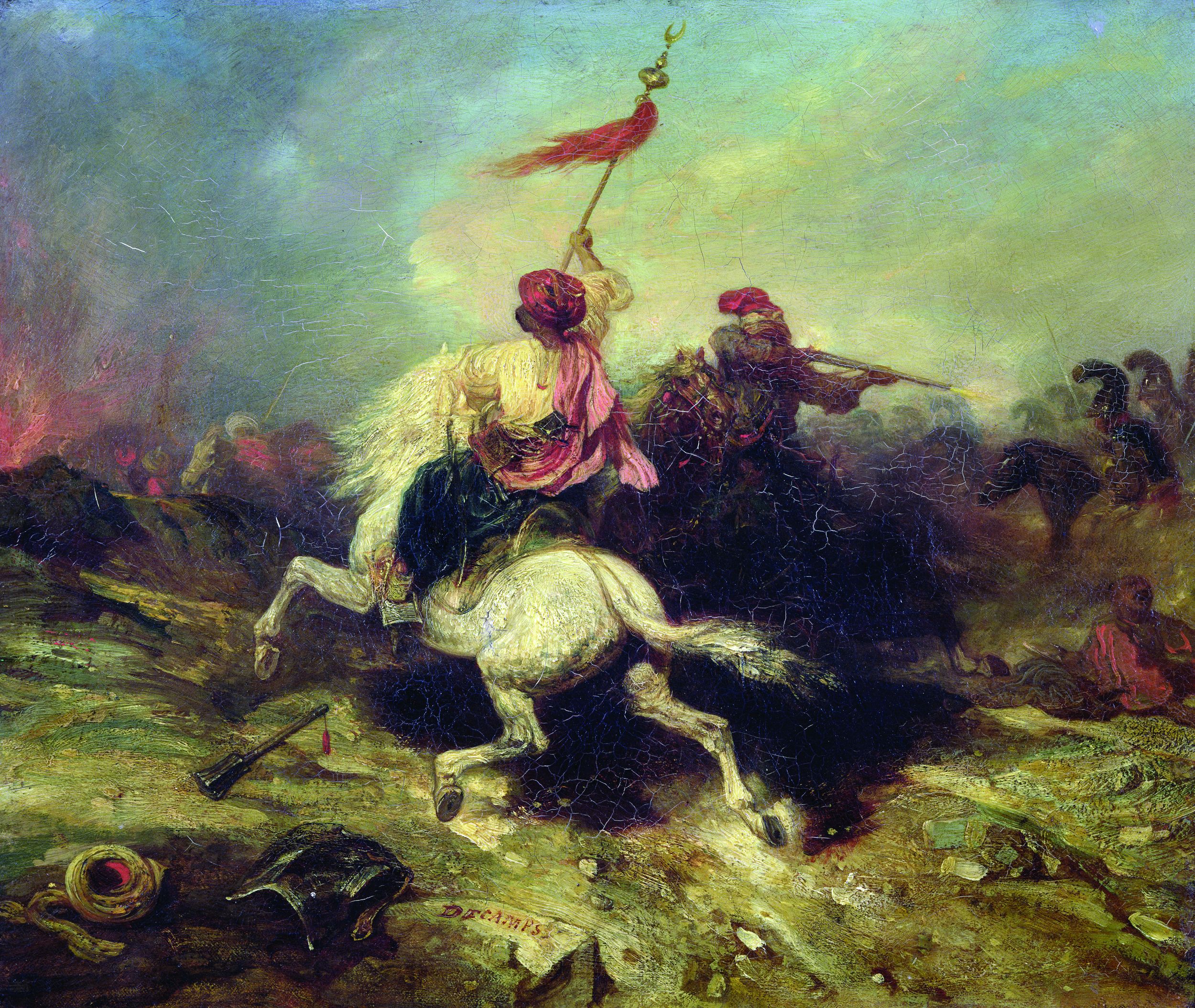By Robert A. Rosenthal
How did we get to dropping an atomic bomb on Hiroshima? Who was responsible? Where and when did it begin? The answers are complex, but the most direct link starts at a double squash court beneath the stands of Stagg Field, the University of Chicago’s unused football stadium. At that unlikely place, at 3:53 pm on December 2, 1942, Enrico Fermi and his team of physicists achieved a self-sustaining nuclear chain reaction that released a controlled flow of energy from the atomic nucleus. This confirmed Albert Einstein’s 1905 special theory of relativity, which states that mass and energy are equivalent, a relationship expressed by the most famous equation in history: e = mc2.
On January 30, 1933, the president of Germany, Paul von Hindenburg, yielded to political pressure and appointed Adolf Hitler chancellor. Hitler moved immediately to legalize anti-Semitism and abolish the civil rights of German Jews. Within two months, the Nazis launched a national boycott of Jewish businesses, dismissed judges and lawyers from their practices, and incited attacks on Jews in the streets.
The First Step Toward the Age of Nuclear War: Albert Einstein Immigrates to America
Because of this political climate, the world’s most famous physicist, Albert Einstein, emigrated later that year to America, where he accepted a professorship at Princeton University’s Institute for Advanced Study. Five years later, in December 1938, German physicist Otto Hahn stunned the scientific world by announcing that he and his research team had split the uranium atom, a process later designated nuclear fission. The possible uses of fission as a weapon and the awareness that the Germans possessed knowledge of this process alarmed the many scientists who had escaped from Nazi-occupied Europe. They feared the consequences of what would happen if Hitler’s scientists should develop such a weapon. Einstein’s best friend, physicist Leo Szilard, who also left Germany soon after the Nazis came to power, tried unsuccessfully to push U.S. government officials to begin an atomic research program.
Finally, in August 1939, Szilard convinced Einstein to send a letter to President Franklin D. Roosevelt urging him to authorize a U.S. atomic research and development program. Prompted by Einstein’s letter, Roosevelt ordered the War Department to put together a top secret “Uranium Committee” to investigate the use of atomic fission in weaponry. Eventually, this led to the establishment of the Manhattan Project, which was to be led by Brig. Gen. Leslie Groves, who had just been transferred from overseeing the construction of the Pentagon.
The bulk of the project’s work was to be accomplished at three major facilities in the United States: bomb design was to be carried out at Los Alamos, New Mexico; the uranium separation process was assigned to a gaseous-diffusion plant in Oak Ridge, Tennessee; and nuclear reactors located in Hanford, Washington, were to produce plutonium.
Uranium, or Plutonium?
Uranium has several isotopes, which are chemically identical in form but different in the number of neutrons they contain. Naturally occurring uranium ore contains about 99 percent uranium U-238 and seven-tenths of one percent of uranium U-235. Only U-235 is easily fissionable, that is, easily converted into energy when bombarded by neutrons. Separation of uranium into U-238 and U-235 is a slow and difficult process, and by early July 1945 only 110 pounds of fissionable U-235 had been delivered to Los Alamos—not enough to make a bomb. Plutonium, which is closely related to uranium, can also be used to make nuclear weapons, but unlike uranium, virtually any combination of isotopes can be used, and it can be produced in large quantities in a nuclear reactor by bombarding uranium with neutrons. It was decided, then, to use uranium in the first bomb, then switch to plutonium for future bombs.
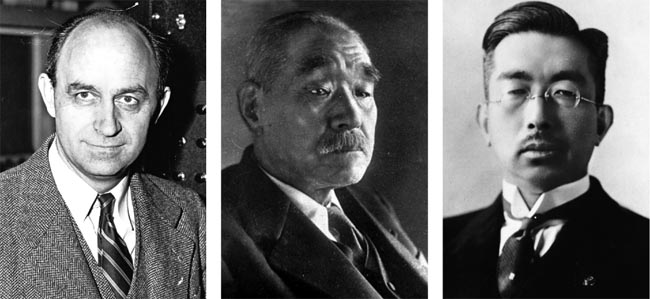
A uranium bomb is simple to make—build a gun that fires a subcritical mass of U-235 at another subcritical mass of U-235. When they slam together, they create a critical mass, and in a few microseconds, a fission chain reaction occurs that releases a huge amount of energy. Plutonium, however, emits so many spontaneous neutrons that the chain reaction starts to occur prematurely as the two subcritical masses approach each other, and a small explosion occurs before the mass becomes critical. This event is called a fizzle. With plutonium, a so-called gun-type bomb would not work, so the scientists had to develop a different approach for the plutonium bomb.
They came up with a scheme that used conventional explosives to crush a sphere of fissionable plutonium into a smaller and denser sphere. When the fissionable atoms are packed closer together, the rate of neutron capture is increased, and the mass becomes critical. This happens much faster than with the gun method.
Because of the complexity of constructing an implosion-type weapon, it was decided that a full-scale test was needed to prove the concept. This test was codenamed Trinity and planned for mid-July 1945 at a small Army airfield in Alamogordo, New Mexico, 250 miles south of Los Alamos. On July 16, the bomb named Fat Man (because of its size) was hoisted to the top of a 100-foot steel tower, where it exploded at 5:30 am with an energy equivalent to about 20,000 tons of TNT.
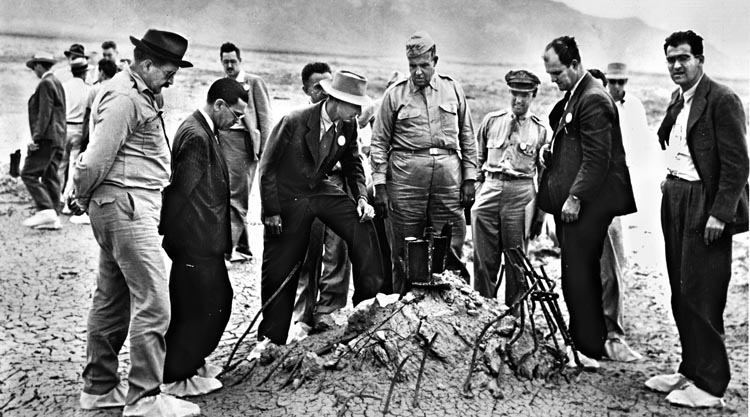
The 1945 Potsdam Conference and the Trinity Test
Potsdam is a small suburb of Berlin set among many lakes and rivers. In mid-July 1945, it was the site of the third meeting of the Big Three Allied powers: the United States, Britain, and the Soviet Union. Much had changed in the five months since the earlier meeting at Yalta in the Crimea. Nazi Germany had been defeated two months earlier, Roosevelt had died and was replaced by Vice President Harry Truman, and Winston Churchill’s Conservative Party was voted out of office in favor of the Labor Party, headed by Prime Minister Clement Atlee.
The conference was planned to begin on the morning of July 16, but the Soviet premier, Josef Stalin, was late due to an apparent mild heart attack the previous day, so the meeting began on July 17.
President Truman had received a report of the successful Trinity test the day before.
Uplifted by the Trinity report, Truman reportedly told Secretary of War Henry L. Stimson that it gave him an entirely new feeling of confidence. Even Churchill later wrote that when Truman got to the meeting after reading the report, he was a changed man. “He told the Russians just where they got on and off, and generally bossed the whole meeting.” That night, Truman wrote to his wife Bess, “We’ll end the war a year sooner now, and think of the kids who won’t be killed.”
The meeting concluded with a long list of conditions, including determining postwar borders in Europe, punishing Nazi war criminals, German war reparations, and the Potsdam Declaration. This last document defined the terms for the Japanese surrender and was signed by Truman, Churchill, and Chiang Kai-shek, chairman of the Nationalist government of China. Stalin did not sign it, as the Japanese-Soviet Non-Aggression Pact of 1941 had kept Russia from declaring war on Japan up to that point.
Important aspects of the declaration included the demand for “unconditional surrender and prosecution of those in authority who have deceived and misled the people of Japan into embarking on world conquest.” The Japanese interpreted these ambiguous phrases to mean destruction of the imperial system and the likelihood that Emperor Hirohito would be tried as a war criminal and executed. To the Japanese people, the hanging of the emperor would be comparable to the crucifixion of Christ.
The Potsdam Declaration was sent to Japan via shortwave broadcast in 20 languages on July 27. All regular programs were cancelled to permit full and repeated broadcasts of the declaration, which was not delivered through diplomatic channels.
Mokusatsu: Japan Answers America’s Demand for Surrender
The following morning, Japanese Prime Minister Kantaro Suzuki convened the Supreme War Council, consisting of the top six members of the government who effectively ruled Japan in 1945. These men adopted a procedural rule regarding surrender that required complete unanimity among them to reach a decision. Suzuki explained the positive shift he saw from the unconditional surrender demand called for earlier to the unconditional surrender of the armed forces, which he believed indicated the preservation of the imperial structure. Not all of the council members were willing to accept this nuanced difference, and later that day Suzuki held a press conference in which he rejected the declaration by treating it with silent contempt, or mokusatsu. That evening, the Japanese-run Hong Kong News called the declaration a piece of unqualified impudence.
Nine days later, on the morning of August 6, Suzuki learned of the dropping of the first atomic bomb (codenamed Little Boy) on Hiroshima.
Never in its history had the United States collectively hated an enemy as it hated Japan. While U.S. propaganda took pains to differentiate between evil Nazi leaders and good Germans, no such distinction was made among the Japanese, who were portrayed as vermin, cockroaches, and rats. They were considered less than human, so the decision to drop the bomb did not trigger moral qualms about killing civilians.
Although Truman never questioned the use of the bomb, there were other members of the U.S. government and military did. General Douglas MacArthur, supreme commander of the Southwest Pacific Theater of operations, considered the bomb completely unnecessary from a military point of view, since, as he believed, the Japanese were already beaten. Others argued for dropping a demonstration bomb in Tokyo Bay or in the ocean off the east coast of Japan.
Arguments Against Dropping the Atomic Bomb on Japan (with Casualties as Counterargument)
There were three main arguments against using the bomb. First, the Japanese were rapidly losing the ability to sustain military operations. They had little food, no oil, no steel, a dwindling navy, and an almost nonexistent air force. In short, they appeared ready to give up.
Second, Stalin promised Roosevelt at the Yalta Conference in February 1945 that he would be ready to attack the Japanese in Manchuria three months after the defeat of Nazi Germany. It was believed that this second front would quickly bring about the Japanese surrender.
Last was the moral and ethical issue of deliberately targeting civilians. Both sides had done this in Europe, and since early March, American Boeing B-29 Superfortress heavy bombers had been fire-bombing Tokyo, killing hundreds of thousands of civilians, but the prospect of bombing with the atomic bomb seemed different.
Proponents of dropping the bomb on Japanese cities responded by citing the increasing number of U.S. casualties with each successive island invasion. During the battle for Saipan and Tinian, June 15, 1944, 11,957 men were wounded and 3,752 were killed—a casualty total of 15,709. On Iwo Jima, February 19, 1945, there were 26,038 casualties—19,217 wounded, 6,821 killed. The invasion of Okinawa, April 1, 1945, saw 55,162 wounded and 12,520 killed for a total of 67,682 casualties.
In the last three major battles, total casualties increased dramatically from 15,000 to 67,000. If Japan did not surrender soon and it became necessary to invade the home islands, it was estimated that U.S. casualties could approach a million men. Many analysts believed that even this prediction was low.
Debate over how costly an invasion would have been has raged for decades. However, the 1940 census of Japan showed 73 million people with 23 million males over the age of 15, and that does not include women. Almost all of them were able to shoot a gun or wield a sword or a sharpened stick.
The most compelling reason to drop the bomb and hopefully avoid invading Japan was the Japanese soldier’s observance of bushido, confirmed in the battle for Saipan. Bushido was the code of moral principles that samurai were required to observe, and it had long been central to Japanese military life. It developed in the 9th century and stressed frugality, loyalty, mastery of martial arts, and honor unto death.
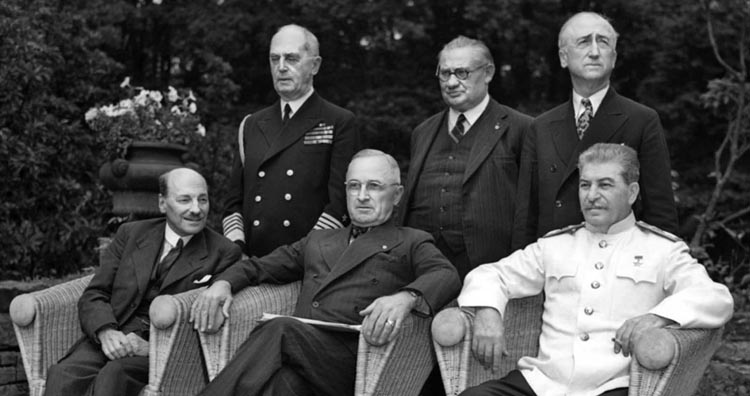
Japanese military planners much preferred decisive battles on the beaches of the homeland. At worst, these tactics would salvage honor in defeat. At best, they believed the Americans would reject this invasion strategy because the cost in human casualties would be too much to pay. To underscore their resolve, Japan’s War Guidelines Council approved a resolution in Hirohito’s presence calling for supreme self-sacrifice and the honorable death of 100 million men, women, and children. With suicide engrained in their culture, it appeared that the entire country had embraced the imagery of national salvation through mass suicide, a willingness to die for their homeland that dwarfed anything in history.
But they were not unyielding ideologues. Japan’s leaders were in fact quite savvy and aware of their difficult position. They were holding out for strategic reasons, their concern being not so much whether to end the conflict, but how to end it, hold onto territory, avoid war crimes trials, and preserve the imperial system. It was not lost on Japanese leaders that war crimes trials were about to begin in Germany, and hanging the emperor was a real possibility.
Their hope was to convince the Soviet Union, which was still uncommitted to fighting in Asia, to mediate a settlement with the Americans. They calculated that Stalin would negotiate more favorable terms in exchange for Japanese-held territory in Asia.
To impress the Japanese hierarchy that the United States possessed an arsenal of super bombs and not just one experimental weapon, American leaders planned on delivering a second bomb soon after the first one was dropped. Since Little Boy was the only one of its kind in existence, the second would have to be a plutonium device like the Trinity prototype.
In early 1944, it was decided that the United States would establish a base in the Northern Mariana Islands, including Saipan, Tinian, and Guam, 1,500 nautical miles from Tokyo. Although the United States did not have an aircraft with that range, prototypes of the B-29 were under development. In July 1944, the islands were occupied by U.S. forces, and Tinian was chosen as the bomber base.
Two B-29s and two pilots were selected to deliver the bombs. The first, scheduled for August 6, 1945, was the Enola Gay, piloted by 32-year-old Colonel Paul Tibbetts and named for his mother. The second, named Bockscar, was to depart three days later on August 9, commanded by 26-year-old Major Charles Sweeney.
The two fissionable uranium-235 segments of Little Boy were shipped separately in two Douglas C-47 transport planes from Albuquerque, New Mexico, to San Francisco, California, where one part was loaded onto the ill-fated heavy cruiser USS Indianapolis for its journey to Tinian. The other part, the “bullet,” was sent by air on a Douglas C-54 cargo plane from San Francisco to Hawaii, and then to Tinian, where it was unloaded on July 25. By July 27, everything had arrived at the bomb-assembly building at Tinian’s North Field.
It was then discovered that the ground clearance of the B-29’s bomb bay doors was too low to accommodate the 28-inch diameter of Little Boy along with its transport dolly. A nine-foot-deep loading pit was dug, the bomb was rolled into the pit, and a hydraulic lift hoisted it into the bomb bay of the airplane. Loading the bomb was delicate, and the fit was tight, but it worked in the end.
The Target List for Little Boy
A target list of four cities was prepared. These cities had been largely untouched during nightly bombing raids against Japan, and an accurate assessment of the weapon’s damage could be made. Hiroshima was selected as the primary target of the first nuclear bombing mission. At 2:45 am on August 6, Colonel Tibbets started his takeoff roll on Tinian’s North Field for the six-hour flight to Japan.
The release at 8:15 am Tokyo time went as planned, and Little Boy, with 140 pounds of U-235, took 43 seconds to fall from the aircraft, which was flying at 31,000 feet, to the detonation altitude of 1,800 feet. The atomic age had arrived, and the world would be changed forever.
News of Hiroshima did not reach Tokyo for almost a day, not until the following morning, because the bomb had wiped out all communication within the city.
Prime Minister Suzuki was awakened at 4 am and informed of the Hiroshima attack. He immediately called members of the Supreme War Council to schedule an emergency meeting but was told they were too busy to meet.
For some time, there was a faction in the Japanese government that wanted to enlist Russia to negotiate an end to the war with the United States. The onerous terms of the Potsdam Declaration added more impetus to this effort.
There was a division between the civilian and the military members of the Supreme War Council, although one military member, Admiral Mitsumasa Yonai, sided with the civilians. The civilians looked at the atomic bomb as an opportunity to surrender without shame, but the admirals and generals still hated unconditional surrender and refused to agree.
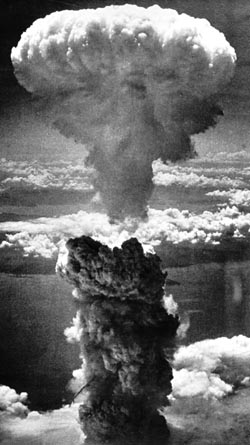
Since late July, the Japanese ambassador to Russia, Naotake Sato, had attempted to get a meeting with Soviet foreign minister Vyacheslav Molotov in order to get a reading on Stalin’s attitude toward helping with peace negotiations. Japanese foreign minister Shigenori Togo still clung to the hope that the war could be ended through Moscow’s intervention, and he continued to press Ambassador Sato to meet with Molotov. Finally, Molotov agreed to meet Sato at 8 pm on August 8. All policy makers in Japan were now waiting for Molotov’s reply.
The previous day, however, Molotov had moved the time of the meeting forward three hours to 5 pm. At the appointed time, Sato arrived at the Kremlin and was ushered into Molotov’s study. Molotov started to read from a paper that announced the Soviet Union would declare war on Japan, effective that evening at midnight. Sato was shocked and asked Molotov if he could send a coded cable before midnight to his government about the declaration of war, but Molotov blocked the transmission lines, and the news never reached Tokyo.
Sato, however, did not catch the important ambiguity that was intentionally omitted from the Soviet declaration of war. Sato assumed that war would begin at midnight on August 8, Moscow time. However, the sly Stalin meant it to be midnight in the Transbaikal time zone, where the invasion of Manchuria would begin, six hours ahead of Moscow time. This explains why Molotov moved the meeting with Sato from 8 pm to 5 pm, which is 11 pm in Manchuria, only one hour from the start of the Soviet invasion. Therefore, Stalin declared war on Japan before the invasion but ensured that by the time the announcement was made public, the invasion would already be an accomplished fact.
It was not until early the following morning, August 9, that Prime Minister Suzuki received this startling news. By this time, reports of Soviet troop incursions into Japanese-held Manchuria were being received. Suzuki immediately scheduled a War Council meeting for 10:30 am to discuss terms of a possible surrender.
The council debated all day, and though the Soviet announcement made clear the hopelessness of their situation, the military faction refused to admit defeat. Even after news arrived during the late morning that Nagasaki had also been bombed with a nuclear weapon, that stunning development could not break the deadlock and did not have much impact on the group.
Japan Offers its Surrender
The War Council agreed to convene a full cabinet meeting at 2:30 pm, but by 10 that night they still had not reached agreement, and they invited the emperor to give his divine opinion.
Hirohito arrived at the meeting 10 minutes before midnight. By 2 am, now August 10, he agreed to a surrender, but only on the condition that the monarchy be retained. Four hours later, at 6:45 am, this news was sent to Bern, Switzerland, and Stockholm, Sweden, the two neutral countries through which communications between Japan and the Allies were being made.
At 4:10 pm that day, Foreign Minister Togo met with the Soviet ambassador to Japan, Jacob Malik, where the two made one of the most bizarre exchanges of official messages in the annals of war. Malik handed Togo a declaration of war, and Togo handed Malik an offer of surrender.
The Japanese offer of surrender was not well received in Washington. Secretary of State James Byrnes reminded others that Roosevelt and Churchill had insisted on unconditional surrender since 1943. Byrnes said that if any conditions were to be accepted, he wanted the United States and its Allies to provide them, not Japan.
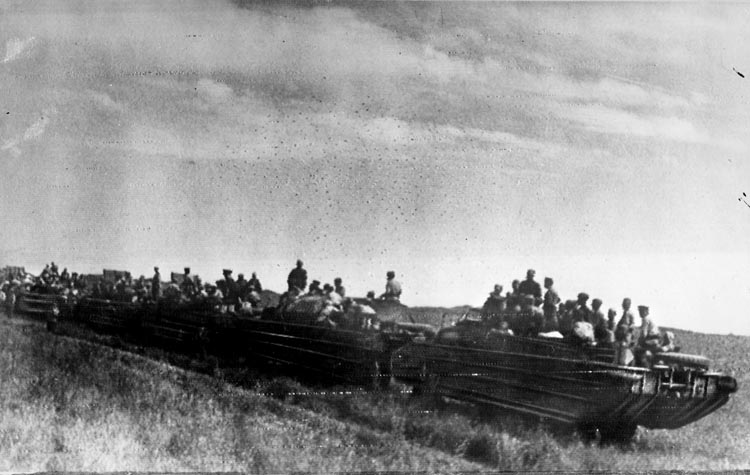
Byrnes was authorized to draft a reply to Japan’s offer, which took a harder position about the emperor than Truman did. The response, however, could not be sent to Japan until the Allies approved it.
The next day, August 11, the Allied response was handed to the Swiss chargé d’affaires in Washington. The machinery of peacemaking ground slowly through the international bureaucracies, so the Japanese Foreign Ministry did not receive Washington’s response until 1 am on Sunday morning, August 12.
For three days, members of the Supreme War Council debated the response. Finally, on August 14, the Emperor intervened and announced his decision to accept the Potsdam conditions. He scheduled a session that evening to record a surrender speech that would be broadcast to the Japanese people the following day. At the same time, Japan’s acceptance of unconditional surrender was sent to Washington.
At noon on August 15, many Japanese heard the emperor’s high-pitched voice for the first time. He announced, “The government has been instructed to accept the terms of the Potsdam Declaration.” This message created confusion in the minds of many listeners, who were now unsure whether or not Japan had actually surrendered. Adding to the confusion was the poor audio quality of the radio broadcast and the formal, courtly language in which the speech was composed.
Hirohito explained that the reason for Japan’s surrender was because of the enemy’s use of a new and cruel bomb that could take many innocent lives. Although the action of the Japanese War Council made it clear that the surrender was triggered by Russia’s declaration of war, it was not mentioned in Hirohito’s speech.
The war was over, but there were many unanswered questions.
What Was the Real Reason that Japan Surrendered?
It is commonly believed that the awesome devastation of the atomic bombs caused the Japanese government to capitulate. The traditional story of Japan’s surrender has a simple timeline. On August 6, 1945, the United States dropped an atomic bomb on Hiroshima. Three days later, it dropped another on Nagasaki. The next day, August 10, the Japanese indicated their intention to surrender because of these bombs. This is the version of events that has been told by historians for more than 70 years, but if the clock is considered in addition to the calendar, a different story unfolds.
What was the real reason that Japan surrendered? Was it the atomic bombs or Russia’s entry into the war in Asia? If it was the Hiroshima bomb, why did Prime Minister Suzuki wait almost three days after he learned of it in the early morning of August 7 before he convened a meeting of the Supreme War Council on August 9?
The reason could not have been the Nagasaki bomb, because he learned of this event in the late morning of August 9, after the council had begun meeting to discuss surrender. It was clear that he had scheduled the meeting before he learned of Nagasaki but almost immediately after he received word that the Soviet Union had declared war on Japan. Yet, Hirohito made no mention of the Soviet Union’s action in his speech to the nation. The explanation is that both Japan and the United States had strong reasons to perpetuate the myth that Japan was forced to surrender because of the atomic bombs.
Hirohito was faced with two choices. He could admit that he and his advisors had failed badly and led his nation through a disastrous war with 80 percent of its cities destroyed, hundreds of thousands of its people killed, and the rest facing starvation. Or, he could blame the loss on an amazing scientific breakthrough that no one could have predicted. The bomb was the perfect explanation for losing the war.
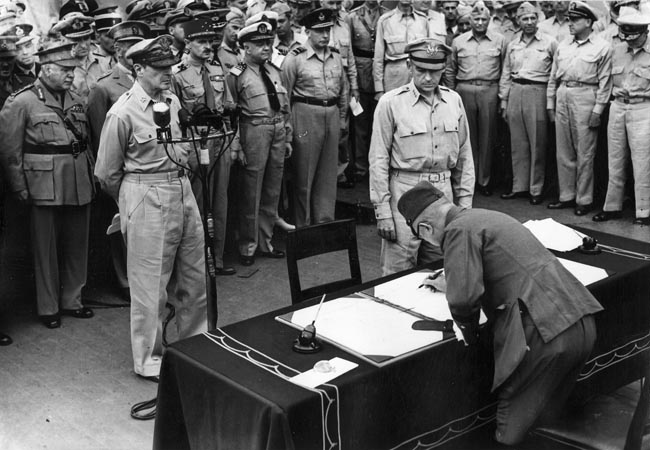
This story served the interests of the United States as well. If the bomb was responsible for winning the war, the perception of U.S. military power would be enhanced, its diplomatic influence in the world would be strengthened, and the billions of dollars spent on the bomb and the Manhattan Project would be justified.
Importantly, if the Soviet entry in the war was advanced as the real reason Japan surrendered, then Stalin could claim that he had been able to do in four days what the United States had been unable to do in four years, and the perception of Soviet military power and diplomatic skills would be greatly improved.
If the bomb did not motivate Japan to surrender, perhaps it was not necessary to use it. Perhaps the bomb did nothing to accelerate Japan’s surrender. A growing number of historians believe that Japan would have surrendered if the United States had merely waited four days until the Soviets entered the war. [This question remains controversial more than 75 years after the surrender of Japan.]
Today, the Enola Gay is housed in the National Air and Space Museum at Washington Dulles Airport and Bockscar in the National U.S. Air Force Museum in Dayton, Ohio, while the runways of Tinian’s North Field have been relegated to the dustbin of history.
World War II is considered by many to be the most significant event in human history. It was certainly the bloodiest, with an estimated 70 to 80 million people killed. The enormous scope of the war is almost impossible to understand in hindsight. Vast areas of Europe, Asia, the Pacific, and North Africa were devastated, and its influence touched every part of the planet. (To get an in-depth look at how the Second World War shaped the future of the world, subscribe to WWII History magazine.)
For more than 50 years, Bob Rosenthal was an architect specializing in the design and development of healthcare facilities. Today, he is an independent filmmaker whose current project is a documentary about the end of World War II in the Pacific that was filmed on Tinian Island. He lives with his wife in Del Mar, California.
